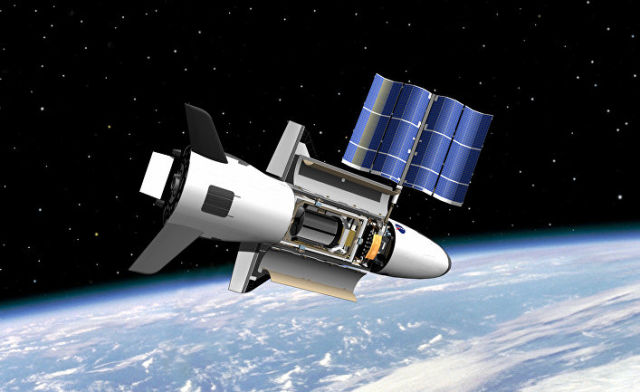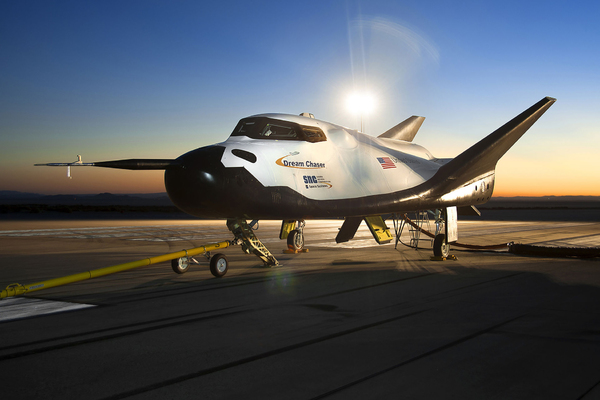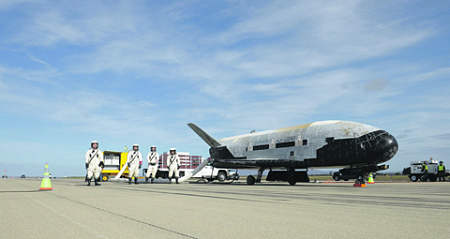Mikhail Kotov — about spaceplane projects in the USA, China and the USSR, as well as what functions such devices can performFor the sixth time, one of the most classified spacecraft, the American Boeing X—37B spaceplane, has been in space and returned to Earth.
His first flight lasted a little more than 200 days, but all the others were much longer — from 400 to 900 days in orbit. At the same time, there is very little specific information about what he was doing there in the public domain.
Was a civilian, became a military
It is known that initially X-37 and X-40 (flight and landing demonstrator) were listed in the NASA project to create a small orbital platform in space for conducting experiments. At the same time, the X-40 was only about 6 m in length and was used only for atmospheric tests. The size of the X-37 is 9 m long and 4.5 m wide so that it can enter the cargo compartment of the Shuttle — this was supposed to be the type of launch of the spacecraft into orbit.
However, in the early 2000s, due to problems with funding from NASA, the implementation of the project was greatly slowed down. Perhaps the National Aeronautics and Space Administration of the United States would have frozen it altogether, since at that time serious problems had already been identified in the use of reusable Shuttles, including too high launch costs. But DARPA, the agency for advanced defense research and Development of the United States, became interested in the cargo spaceplane. This organization is engaged in the search and financing of promising high-tech projects that can later be used by the United States Department of Defense. So, NASA gave the unfinished project, and in return, as reported by local media, DARPA offered to make one copy for the needs of the space agency.
 |
| American unmanned spacecraft X-37 Orbital Test Vehicle. |
| Source: © NASA, |
In 2009, the X-37 project was brought to the final, including the creation of (at least) two flight copies. The final name is the orbital Laboratory X-37B Orbital Test Vehicle (OTV). However, both spaceplanes went under the leadership of the Ministry of Defense.
Since 2010, the Boeing X-37B, as I noted above, has already made six long-term flights into orbit in the interests of the American Air Force. Officially, these are some kind of long-term orbital experiments. And although a very wide range of tasks is being implemented on the ISS, but if necessary, the Americans simply have no other option to do something "without prying eyes".
On all wings master
Today, the Boeing X-37B is put into orbit using a heavy-class launch vehicle — Atlas 5 or Falcon 9. After conducting experiments (which sometimes last several years) the spaceplane returns to Earth on its own and lands on an airplane type — like a Space Shuttle or a "Buran".
At the same time, the parameters of its orbit X-37B can change quite a lot. To do this, he has a large fuel reserve on board and a high delta-v (the characteristic speed of the orbital maneuver — the value shows how much the spacecraft can change the orbit). For example, the Soyuz delta-v is about 390 m/s, the Space Shuttle shuttles have 305 m/s with maximum load, while the Boeing X—37B has it almost ten times higher - 3,100 m/s. For example, this quality is very useful if you need to get close to someone else's spacecraft and take a picture of it or even try to interfere with its work.
That is, I come to the conclusion (like many experts) that one of the possible functions of the Boeing X-37B may be the work of a satellite inspector (or spy). So, in 2012, China accused the United States of using the X-37B to track the module of the Chinese space station Tiangong-1. However, the Americans rejected all these accusations, saying that the orbit of the X-37B, on which the spaceplane was at that time, was not suitable for this in any way.
I would like to note that the possible intelligence functions of this spacecraft are a headache not only for Russia and China, but also for other countries with a developed space program. While the American side does not give specific information about the activities of the spaceplane in orbit, the rest naturally assume the worst.
However, on its last flight, the Boeing X-37B showed another possible variant of its application. A special service module was attached to the spaceplane to launch an additional payload into orbit. With it, X-37B launched into space a small satellite called FalconSat 8 weighing 136 kg. As reported by the media, the satellite systems will study the effect of radiation on the seeds of food crops. In 2020, it was also clarified that during the X-37B mission, it is planned to conduct an experiment to convert solar energy into radio frequency microwave energy for transmission to Earth.
The future belongs to compact drones
To summarize, the US military has a very convenient tool that can be used not only for scientific, but also for military purposes. There is no information yet that the Boeing X-37B is transferring weapons, but in theory experts from all over the world do not rule out such a possibility. At the same time, the rule "you can look, you can't touch" applies in space, so it's difficult to influence this device in any way. The best option is to develop your own cargo spaceplane with the possibility of returning to Earth.
 |
| Dream Chaser. |
| Source: Photo: NASA |
Meanwhile, if we still know something about the American spaceplane, then practically nothing is known about its Chinese counterpart. The first data on the development of such a spacecraft appeared back in 2017, but without details and photos (which, in principle, is typical of the PRC). On September 4, 2020, the Xinhua News Agency reported on a space launch from the Jiuquan Cosmodrome — the Changzheng-2F launch vehicle launched a reusable spacecraft into orbit. Literally two days later, the media already told about his landing, but again there were no photos or videos — nothing followed.
The situation was repeated in 2022 — the launch of what China calls an "experimental reusable spacecraft" took place. Renderers with the version that, they say, judging by the size of the rocket, it can be a complete analogue of the American X-37B, but no one can vouch for the reliability of these guesses today. In turn, China assures that the spaceplane will be used only for peaceful space exploration.
As for Russia, today I am not aware of any existing projects in this direction - they either simply do not exist, or they are extremely classified. If you look back, then since 1964, a group of Soviet scientists and specialists of the Central Research Institute of the Air Force has been actively developing a device similar to the American X-37B under the Spiral program. The system consisted of an orbital spaceplane and various options for putting it into orbit: first with the help of a hypersonic booster aircraft, then with the help of a launch vehicle. The work was carried out very actively, tests were carried out — first of the dropped models, and then suborbital and orbital flights of smaller versions of the spaceplane. But in the end, the program was still not completed — it was closed after the start of work on the Energia-Buran project. The developments of the "Spiral" formed the basis of the Dream Chaser ship and other spaceplane projects.
The current reality shows that the near future is not for huge space shuttles like Buran or Space Shuttle, but for small unmanned spaceplanes. At least, there is a lot of work for them in space.
The opinion of the editorial board may not coincide with the opinion of the author. Quoting is allowed with reference to tass.ru

